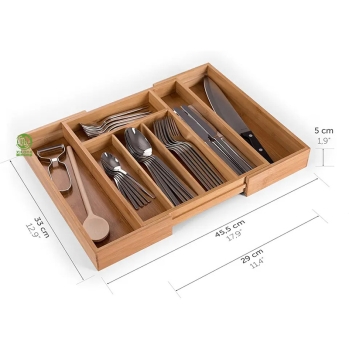What Makes Bamboo Different from Regular Wood?
Many people assume bamboo is just another type of wood, but that's honestly not quite right. Bamboo is actually a grass – yes, the same family as the grass in your lawn, just much taller and stronger. Understanding what makes bamboo unique helps explain why bamboo products have become so popular for furniture, kitchenware, and home accessories.
Bamboo Is Technically a Grass
The biggest surprise for most people is learning that bamboo isn't wood at all. It's a giant grass that can grow up to 3 feet per day in the right conditions. This incredible growth rate is one of bamboo's most important characteristics and explains why it's considered so sustainable.
Unlike trees that take decades to mature, bamboo reaches full size in just 3-5 years. When harvested, the root system stays alive and produces new shoots, so there's no need for replanting. This natural regeneration makes bamboo a renewable resource that keeps producing without damaging the environment.
How Bamboo Grows Stronger
Bamboo's structure is different from regular wood in important ways. While trees have growth rings that expand outward, bamboo grows in segments with nodes (those ring-like bands you see on bamboo poles). These nodes create natural strength points that make bamboo incredibly tough.
The fibers in bamboo run vertically through the entire plant, creating exceptional strength along its length. This fiber structure gives bamboo a higher tensile strength than many types of wood and even some steel. That's why bamboo products can be surprisingly strong despite feeling lightweight.
Natural Properties That Matter
Bamboo has built-in qualities that wood doesn't naturally possess. It contains a substance that makes it naturally resistant to bacteria and pests. This means bamboo cutting boards and utensils stay more hygienic than plastic alternatives, and bamboo furniture resists insect damage without chemical treatments.
The moisture resistance of bamboo is another useful property. While wood can warp or crack with humidity changes, properly processed bamboo maintains its shape better. This stability makes bamboo products more reliable in kitchens, bathrooms, and other areas where moisture is common.
Processing Makes the Difference
Raw bamboo poles need processing to become the smooth bamboo products you see in stores. The bamboo is split, the outer layer is removed, and the inner material is cut into strips. These strips are then pressed and laminated together under high pressure to create bamboo boards or panels.
Modern manufacturing techniques can create different types of bamboo products. Horizontal grain bamboo shows the natural nodes and creates a traditional bamboo look. Vertical grain bamboo has a more uniform appearance similar to hardwood flooring. Strand-woven bamboo uses a different process that creates an extremely dense and durable material.
Why Bamboo Feels Different
When you touch bamboo products, they feel warmer and more natural than plastic, but smoother than most wood. This pleasant texture comes from bamboo's tight fiber structure and natural silica content. The smooth surface doesn't splinter easily like some woods, making bamboo safer and more comfortable to use.
The weight of bamboo products often surprises people too. Bamboo furniture feels solid and substantial but is usually lighter than equivalent wooden pieces. This combination makes bamboo furniture easier to move and rearrange while still feeling sturdy and well-made.
Color Variations You'll Notice
Natural bamboo has a light, blonde color that brightens any space. Some bamboo products go through a carbonization process that darkens the color to a rich caramel or amber tone. This darker bamboo offers style variety but is slightly softer than natural bamboo.
The color you choose affects more than just appearance. Natural bamboo products tend to be harder and more durable, while carbonized bamboo products offer a warmer, more traditional wood-like aesthetic. Both types maintain bamboo's core benefits of strength and sustainability.
Environmental Benefits Explained Simply
Bamboo's fast growth and natural regeneration make it environmentally friendly in ways regular wood can't match. A bamboo forest produces more oxygen and absorbs more carbon dioxide than a similar-sized tree forest. Choosing bamboo products supports sustainable forestry practices without sacrificing quality or functionality.
The cultivation process for bamboo also requires less water and no pesticides compared to many tree farms. This lighter environmental footprint extends through the entire production process, making bamboo products a genuinely greener choice.
Understanding Quality Differences
Not all bamboo products offer the same quality. The best bamboo products come from mature bamboo (at least 3-5 years old) that's been properly harvested and processed. Quality manufacturers use appropriate glues and finishing techniques that maintain bamboo's natural properties while ensuring durability.
When shopping for bamboo products, look for smooth finishes without gaps or rough spots. Quality bamboo should feel solid and substantial, not flimsy or hollow. These simple checks help you find bamboo products that will perform well and last for years.
Conclusion: Understanding Bamboo's Unique Nature
Bamboo's differences from regular wood aren't just technical details – they create real advantages in everyday products. From natural antibacterial properties to impressive strength and environmental benefits, bamboo offers qualities that regular wood simply can't provide. Now that you understand what makes bamboo special, you can appreciate why it's becoming such a popular choice for homes worldwide.







